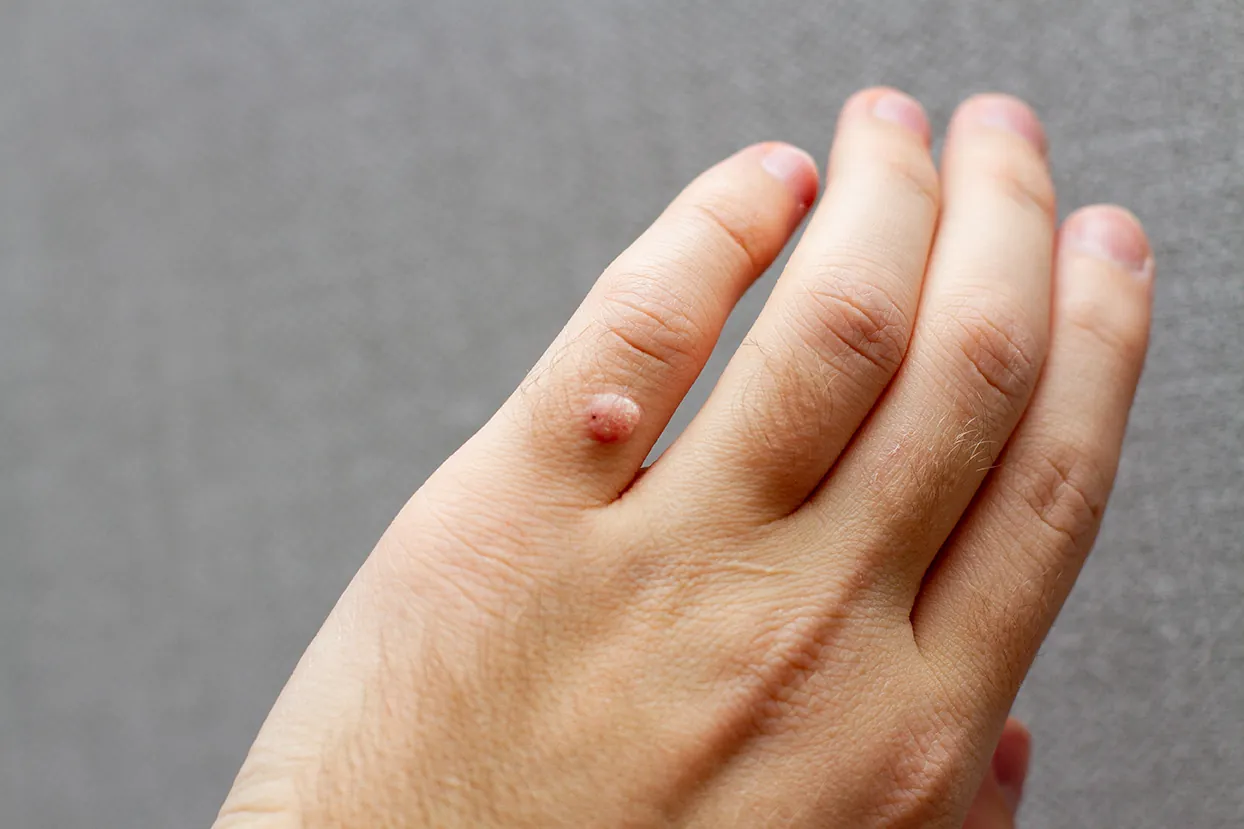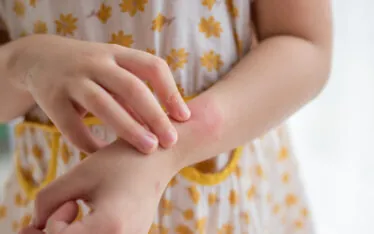Tired of Stubborn Warts? When to See a Dermatologist for Removal

Warts are one of those skin issues that seem simple…until they refuse to go away. They can be uncomfortable, stubborn, and even embarrassing, especially when home treatments don’t work. The good news? Dermatologists have proven ways to remove warts safely and effectively. Here’s what causes them, when to seek professional care, and what treatment options look like.
What Causes Warts, and Why Are They So Stubborn?
Warts are caused by the human papillomavirus (HPV), which enters the skin through small cuts or breaks. Once inside, the virus triggers rapid skin cell growth, forming a wart. According to the American Academy of Dermatology (AAD), HPV is highly contagious and can spread through direct skin-to-skin contact or by touching contaminated surfaces like towels, floors, or nail tools.
Some warts disappear on their own as the immune system fights the virus, but others can last for months or even years, particularly when located in areas with thicker skin or constant pressure. Over-the-counter treatments often fail because they can’t penetrate deeply enough or because the immune system doesn’t respond well without medical support.
Types of Warts You Might Be Dealing With
Not all warts are the same. They differ in appearance, where they develop, and how stubborn they can be. Identifying your wart type can help you understand why it formed and what treatments may work best.
Common Warts (Verruca vulgaris)
These are the rough, raised bumps you often see on hands, fingers, or knees. They have a cauliflower-like texture and may have small black dots (clotted blood vessels).
Plantar Warts
Found on the soles of the feet, these can be painful when you walk. Plantar warts may look flat or callused and sometimes grow in clusters called “mosaic warts.”
Flat Warts
Small, smooth, and slightly raised, these often appear on the face, neck, hands, or legs. They tend to grow in larger numbers.
Periungual or Subungual Warts
These warts grow around or under fingernails and toenails. They are difficult to treat and can interfere with nail growth.
When to See a Dermatologist for Wart Removal
It’s easy to assume warts are harmless and treatable with drugstore remedies, but some require medical attention. If your wart fits any of the situations below, a dermatologist should evaluate it.
1. The Wart Is Painful or Bleeding
Plantar warts or nail-area warts can cause discomfort that interferes with walking, typing, or other daily activities. If a wart bleeds, it needs professional attention.
2. It’s Not Going Away After Weeks or Months
If you’ve tried over-the-counter treatments without results, medical-grade treatments are likely necessary. Chronic warts often need procedures that go deeper than surface treatments.
3. It’s Spreading or Multiplying
When new warts appear near the original one—or on other parts of your body—the infection is active and needs professional intervention. Treating early can prevent more from developing.
4. You’re Unsure If It’s a Wart
Some skin cancers can mimic the look of a wart, especially squamous cell carcinoma. If you’re uncertain about a new growth, don’t guess—have a dermatologist examine it.
5. You Have a Weakened Immune System
People with compromised immunity may experience warts that are more resistant, more contagious, and more likely to spread. Professional care is crucial for safe and effective treatment.
How Dermatologists Remove Warts
Dermatologists have access to advanced treatments that work faster and more effectively than home remedies. The best option depends on the wart’s type, size, location, and how long you’ve had it.
Cryotherapy (Freezing with Liquid Nitrogen)
The most common approach is cryotherapy, which involves freezing the wart with liquid nitrogen. This destroys infected tissue. If you have a deep or stubborn wart, you may need multiple sessions.
Electrosurgery & Curettage
This procedure involves scraping the wart and cauterizing the base to prevent regrowth. It’s most frequently used for thicker or more persistent warts.
Topical Prescription Treatments
Your dermatologist may prescribe a topical treatment, such as a stronger acid or immune-modulating cream. These are stronger, safer, and more effective than the wart removal options you can buy over the counter.
Laser Wart Removal
This treatment uses laser energy to target the blood supply of the wart, which effectively destroys it. It’s particularly useful for deep plantar warts or cases that have resisted other treatments.
Immunotherapy (For Recurring or Resistant Warts)
If your warts keep coming back, your dermatologist may recommend immunotherapy. This works by stimulating the immune system to attack the virus causing the warts. It’s often used for widespread or particularly stubborn cases.
What to Expect During and After Wart Treatment
Most wart removal procedures are performed in-office and often take just a few minutes per session, but the exact steps vary depending on the treatment method. Some procedures, like cryotherapy, cause only brief stinging, while others, such as electrosurgery or laser therapy, may involve numbing and slightly longer recovery. Healing time and discomfort depend on the technique used, the wart’s size, and its location.
Follow-up care is essential. Your dermatologist will give specific instructions, which may include keeping the area clean, applying topical medications, or scheduling multiple visits for complete removal. Avoid picking at treated areas to reduce infection risk and prevent the virus from spreading.
When you visit Clarus Dermatology for wart treatment, we’ll explain the specifics of the treatment we recommend so you know what to expect. If you have any questions, don’t hesitate to ask.
Don’t Let Warts Keep Coming Back
The best way to avoid repeat treatments is prevention. Because HPV is contagious, taking a few precautions can lower your risk of spreading or developing new warts.
- Avoid picking or scratching warts.
- Keep warts covered with a bandage or medical tape.
- Disinfect shared surfaces like shower floors and gym equipment.
- Wear flip-flops in public showers, locker rooms, and around pools.
Good hygiene habits make a big difference in controlling HPV transmission.
When in Doubt, Get It Checked
Many people struggle for months with home treatments that don’t work. A dermatologist can confirm whether it’s truly a wart and begin the right treatment immediately. If you’re tired of stubborn warts or worried about a growth that looks unusual, stop guessing and see a specialist.
Ready to Say Goodbye to Your Wart—for Good?
Professional treatment is the most effective way to eliminate stubborn warts and prevent them from coming back. Our board-certified dermatologists provide safe, expert care for patients of all ages.
Appointments are available as soon as today or tomorrow. Schedule yours now and take the first step toward healthy, clear skin.
Frequently Asked Questions
Can dermatologists remove warts?
Yes. Dermatologists are trained to remove warts safely and effectively using treatments like freezing, laser therapy, and prescription medications. These options are far more effective than over-the-counter products. If your wart is painful, spreading, or hasn’t improved with home care, it’s time to see a dermatologist.
Do dermatologists treat plantar warts?
Absolutely. Plantar warts can be very uncomfortable, especially when walking. Our experienced dermatology team can recommend the right treatment—such as cryotherapy, laser therapy, or minor surgical removal—to target the wart at its root and reduce the chance of it coming back.
How long does wart removal take?
Most in-office wart treatments take just a few minutes, although some warts require more than one session. Healing time depends on the method used and the size and location of the wart. We’ll walk you through what to expect and how to care for the area afterward.
What’s the best option for wart removal at a dermatologist?
There isn’t one single best option. It depends on the type of wart, its location, and how long you’ve had it. Dermatologists may use freezing, electrosurgery, laser therapy, or prescription treatments. We will recommend the safest and most effective choice for your specific case.


